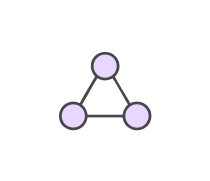NetFlow traditionally enables several key customer applications including:
+ Network Monitoring – NetFlow data enables extensive near real time network monitoring capabilities. Flow-based analysis techniques may be utilized to visualize traffic patterns associated with individual routers and switches as well as on a network-wide basis (providing aggregate traffic or application based views) to provide proactive problem detection, efficient troubleshooting, and rapid problem resolution.
+ Application Monitoring and Profiling – NetFlow data enables network managers to gain a detailed, time-based, view of application usage over the network. This information is used to plan, understand new services, and allocate network and application resources (e.g. Web server sizing and VoIP deployment) to responsively meet customer demands.
+ User Monitoring and Profiling – NetFlow data enables network engineers to gain detailed understanding of customer/user utilization of network and application resources. This information may then be utilized to efficiently plan and allocate access, backbone and application resources as well as to detect and resolve potential security and policy violations.
+ Network Planning – NetFlow can be used to capture data over a long period of time producing the opportunity to track and anticipate network growth and plan upgrades to increase the number of routing devices, ports, or higher- bandwidth interfaces. NetFlow services data optimizes network planning including peering, backbone upgrade planning, and routing policy planning. NetFlow helps to minimize the total cost of network operations while maximizing network performance, capacity, and reliability. NetFlow detects unwanted WAN traffic, validates bandwidth and Quality of Service (QOS) and allows the analysis of new network applications. NetFlow will give you valuable information to reduce the cost of operating your network.
+ Security Analysis – NetFlow identifies and classifies DDOS attacks, viruses and worms in real-time. Changes in network behavior indicate anomalies that are clearly demonstrated in NetFlow data. The data is also a valuable forensic tool to understand and replay the history of security incidents.
+ Accounting/Billing – NetFlow data provides fine-grained metering (e.g. flow data includes details such as IP addresses, packet and byte counts, timestamps, type-of-service and application ports, etc.) for highly flexible and detailed resource utilization accounting. Service providers may utilize the information for billing based on time-of-day, bandwidth usage, application usage, quality of service, etc. Enterprise customers may utilize the information for departmental charge-back or cost allocation for resource utilization.
(Reference: http://www.cisco.com/en/US/products/sw/netmgtsw/ps1964/products_implementation_design_guide09186a00800d6a11.html#wp1030045)
















